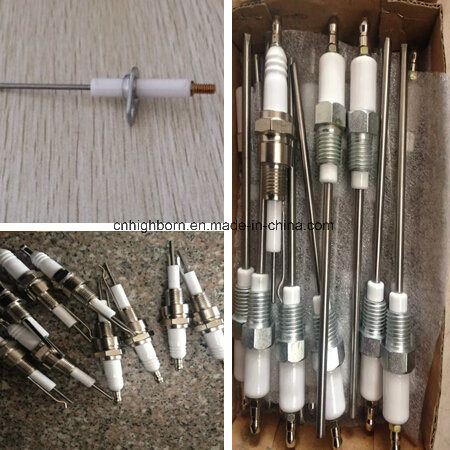Forging is a manufacturing process involving the shaping of metal using localized compressive forces. The blows are delivered with a hammer (often a power hammer) or a die. Forging is often classified according to the temperature at which it is performed: cold forging (a type of cold working), warm forging, or hot forging (a type of hot working). For the latter two, the metal is heated, usually in a forge. Forged parts can range in weight from less than a kilogram to hundreds of metric tons. Forging has been done by smiths for millennia; the traditional products were kitchenware, hardware, hand tools, edged weapons, and jewellery. Since the Industrial Revolution, forged parts are widely used in mechanisms and machines wherever a component requires high strength; such forgings usually require further processing (such as machining) to achieve a finished part. Today, forging is a major worldwide industry
Main particulars
MAIN PARTICULARS
Material for product
Brass, steel, Iron, SS, Aluminum
Standard
ASTM, ASME, DIN, JIS, ISO, BS, API, EN
Certificate
ISO9001, BV
Dimension
As per drawing, as large as we can
Processing
Forging+blasting+Machining
Finishing surface
Machined surface with tectyl891, blasting and painting(Hempel, Inter, Sigma, Jotun), anodize, polishing
Marking
as per clients` requirements
Inspection
material, construction, dimension, heat treatment, hardness, NDT
Quality
ISO9001, BV, PPAP control production
CMM, digital projector, Rockwell hardness tester, hydraulic pressure
Lead time
5 days for sample, consult with customer for mass production
Delivery
Express for sample, ocean shipping/air for mass production
Our Capabilities
CNC Machining, CNC center machining, drilling, milling, turning, grinding, tapping, forging, stamping
Engineering&manufacturing services
R&D process, tooling and gauging design, product design
Integrated CAD/CAM system, test and measuring
Others
Recyclable, in line with environmental requirements and standards, and reliable
Forging is a kind of pressure of forging machinery for metal blank, make its produce plastic deformation in order to obtain certain mechanical properties, a certain shape and size of forging processing method, forging, forging and stamping) of one of the two part. By forging can eliminate the metal smelting process of as-cast loose defects, such as optimizing the microstructure, at the same time because of the intact metal flow, forging generally better than that of the same material on the mechanical properties of the castings. Related mechanical load is high, the working conditions of severe important parts, in addition to a simpler shape rolling plate, profile or welding parts are available, use forging more.
Forging Parts,Aluminum Forging,Brass Forging,Stainless Steel Forging Parts Shinvast Industry Ltd , https://www.shinvastindustry.com
alumina igniter electrode ceramic for gas burner
Material: 95% ceramic, glazed ceramic tube
Â
size: OD8.0*ID3.5*L100MM, OD14*ID4.5*L200MM
Â
1. Details:
Â
ceramic insulator tube for many kinds of ignition systems. such as gas cookers, and heaters etc.
glazed ceramic tube, it is used as the ceramic ignitor
material is 95%AL2O3, with glazed surface.
we are in good position to produce them as per your drawing.
if you need any of them, please feel free to contact us.
Â
2. Features:
a. ceramic with smooth glazing
b. Abrasive and errosion resistant
c. Lead free glazing(ROHS)
d. anti-high temperature
Â
Industry wear resistant ceramic
Using aluminum oxide as raw material,adding a variety of abrasion resistant materials,with unique molding method,Abrasion resistant ceramic is sintered by 1600 and achieve 95 porcelain standard.With great density,high toughness,abrasion resistance and smooth surface,equivalent to 266 times as manganess steel.it adopt surface design to cushion material lining and avoid breaking the ceramic.
Â
Range of application
Thermal power plant,steel,coal,pier,glass-making,coking mine,and cement industry.
In thermal power plant,coal conveying and milling system
In concentration plant,whirlcone liner,elbow,pipe,valve,sieve plate and charging hole etc
In magnetic extractor,magnetic roller,dump chest,discharge hole


Item                                                                                    Â
Unit                  Â
Steatite ceramic          Â
95 Al2O3Â Â Â Â Â Â Â Â Â Â Â Â Â
96 Al2O3Â Â Â Â Â Â Â Â Â Â Â Â Â
Physical Characteristics          Â
Bulk density                         Â
g/cm3
2.7
3.6
3.6
Water absorption      Â
%
0
0
0
Mechanical Characteristics          Â
                   Flexural strength
Mpa
145
320
340
Hardness Vickers                Â
Gpa
5.7
12.2
13.5
Elastic modulus                    Â
Gpa
120
280
320
Poisson's ratio                      Â
-
0.21
0.22
0.23
Thermal Characteristics    Â
Linear expansion coefficient                Â
(20-5000C) 10-6/0C
7.9
7.1
7.2
Thermal conductivity      Â
w/(m.k)
2.5
16
24
Specific Heat                        Â
*10-3J/(kg*K)
0.75
0.78
0.78
Electrical Characteristics    Â
Dielectric constant(1MHZ)Â Â Â Â Â
-
6.2
9
9.4
Dielectric loss angle              Â
*10-4
18
15
5
Dielectric strength                Â
*106V/m
18
12
15
Alumina Ceramic Ignition Electrode for Gas Boilers
Model NO.: HB109
Surface: Glazed
Material: 95% Alumina
Color: White
Type2: Ceramic Electrode
Trademark: HB
Transport Package: Wooden Box or Carton
Specification: ROHS
Origin: Jiangsu/China
HS Code: 6906000000